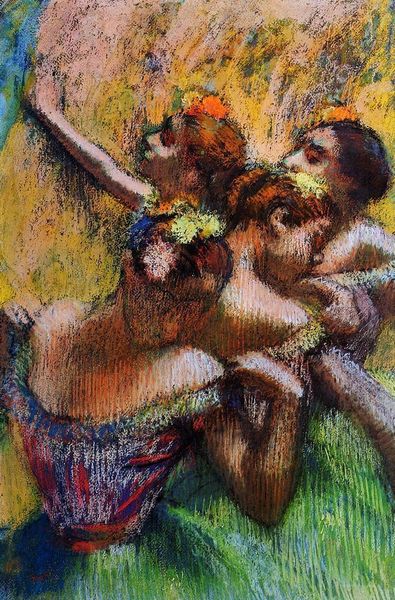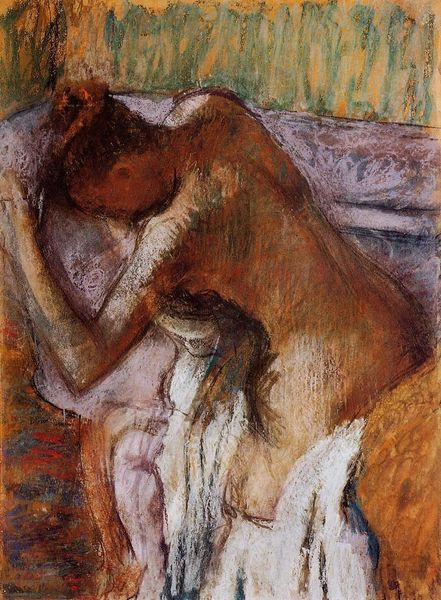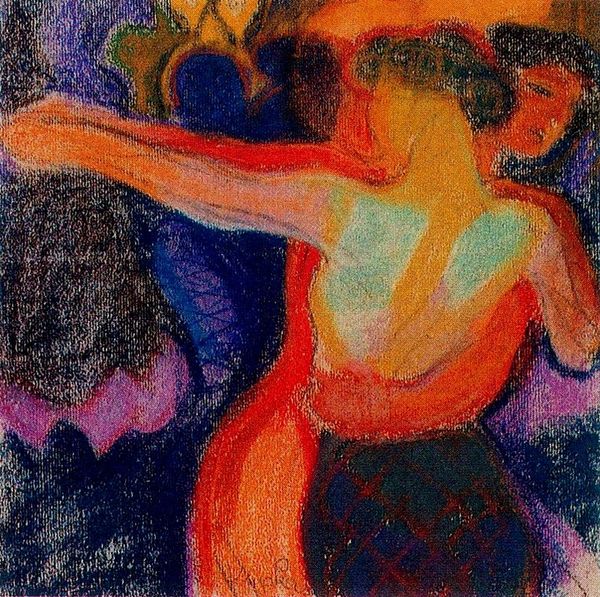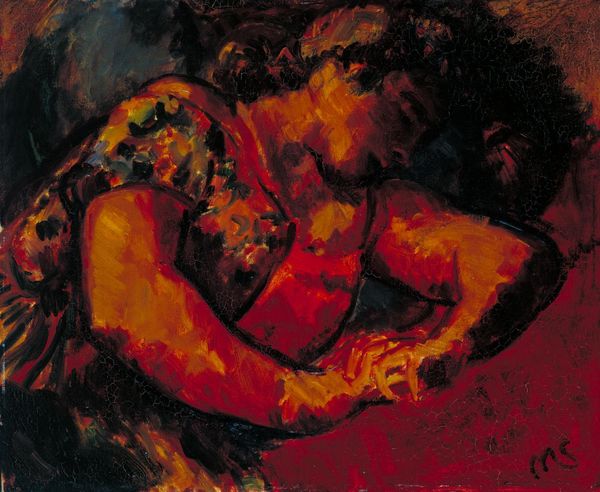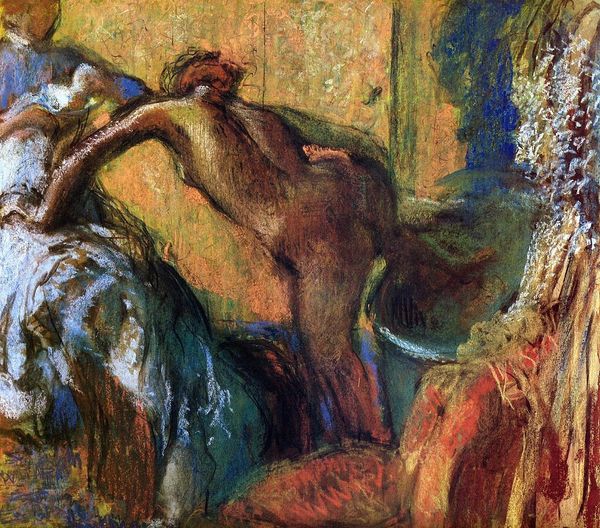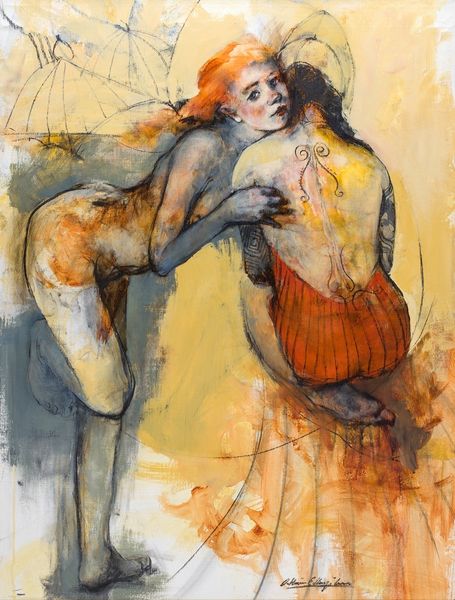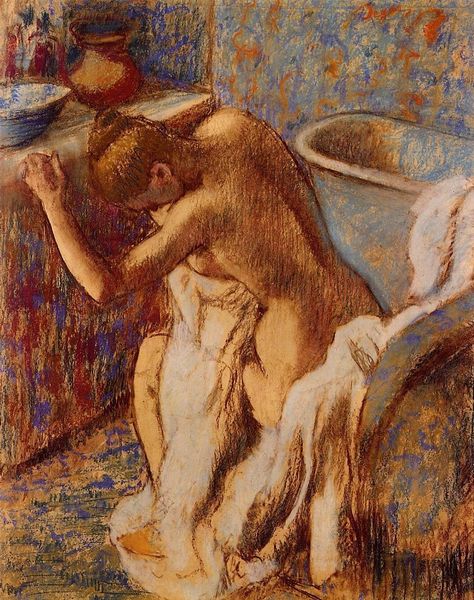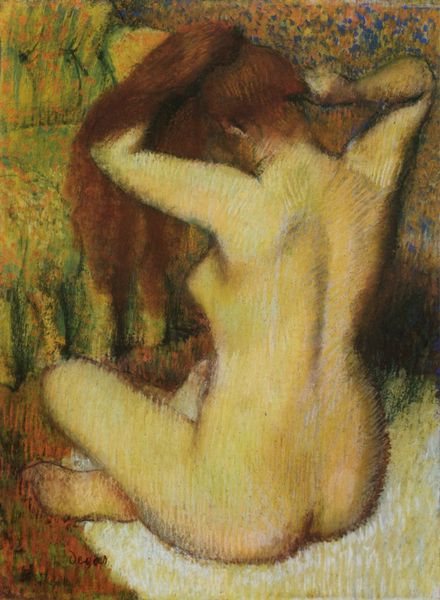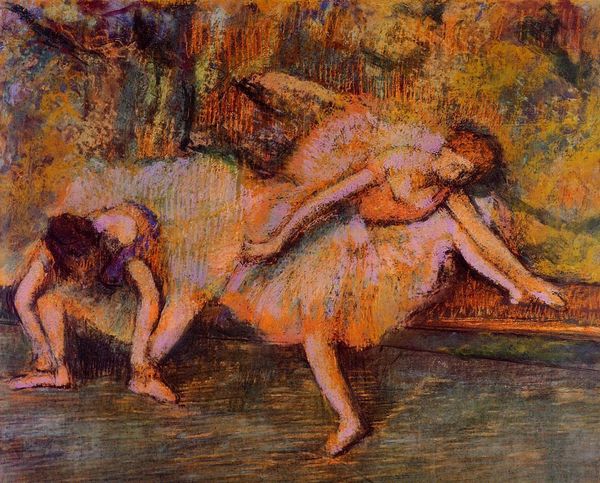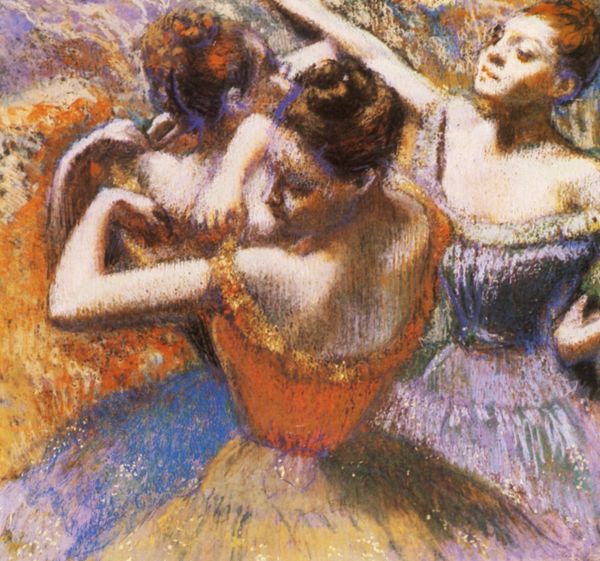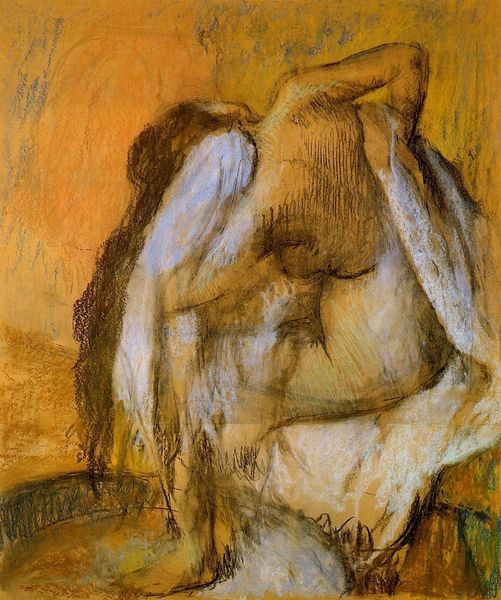
Copyright: Public domain
Editor: Here we have Edgar Degas's "Dancers," created around 1900, likely a pastel or oil pastel on paper. There's a real sense of movement, an almost frenetic energy in the application of color. How do you interpret this work, particularly in the context of its time? Curator: It's essential to acknowledge the power dynamics at play within the ballet world that Degas frequently depicted. These women were often from working-class backgrounds, their bodies on display and under constant scrutiny for the entertainment of a wealthy, largely male audience. Editor: That's a darker reading than I initially considered. I was focusing more on the formal aspects. Curator: The formal elements, like the cropped composition and the blurred lines, are vital, but they can't be divorced from the social context. The seeming "informality" can also reflect the precarity of these dancers' lives – a fleeting moment captured. Degas isn't simply showing us dancers; he's showing us labor, performance, and perhaps exploitation. What do you make of the fact he never paints them as stars? Editor: It definitely adds another layer. Seeing them as laborers changes the perspective entirely. I guess I hadn’t considered the societal pressures reflected in the work. Curator: Exactly. This reframing challenges the romanticized image of ballet. It pushes us to consider the gaze—whose perspective is prioritized, and what stories remain untold? The incomplete feel isn't just a stylistic choice; it mirrors the incomplete narratives surrounding these women. Editor: This has been a very insightful deep dive; I’ll never look at Degas’s dancers the same way again! Curator: Precisely the goal. To understand the surface you have to unpack the historical narrative embedded within the layers.
Comments
No comments
Be the first to comment and join the conversation on the ultimate creative platform.

